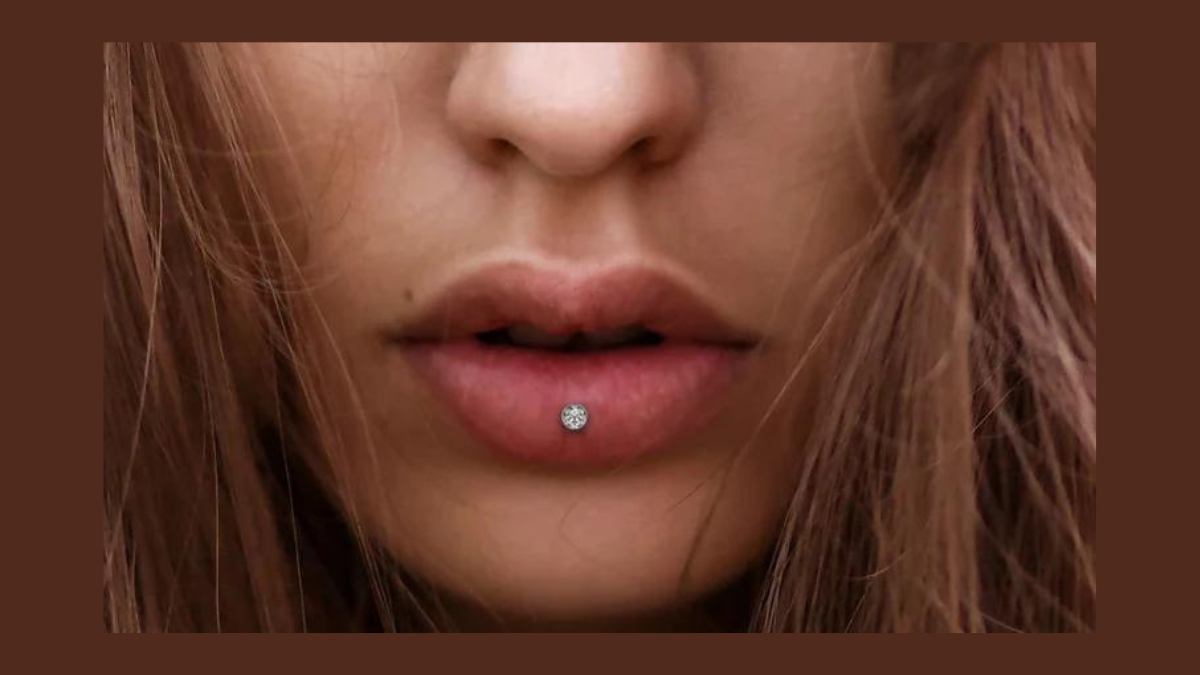In the realm of body modification, piercing enthusiasts often seek unique and eye-catching modifications to express their individuality. One such piercing that has gained popularity among the aficionados is the Ashley Piercing, also known as the inverse vertical labret piercing. In this article, we will delve into the intricacies of vertical labret piercing, exploring the procedure, pain levels, healing process, potential complications, and the diverse jewelry options available.
Procedure for Vertical Labret Piercing
Before embarking on the journey of getting a vertical labret piercing or Ashley piercing, it is crucial to choose a reputable piercer. Opt for a certified professional who adheres to local health department regulations, and consider checking online reviews to ensure the shop’s credibility.
The steps involved in the vertical labret piercing process are meticulous and require precision:
- Cleansing: The professional cleanses the lower lip using water and a disinfectant solution.
- Mouthwash: An antibacterial mouthwash is used to eliminate bacteria in the mouth that may affect the pierced area.
- Marking: The designated location for the piercing is marked both inside and outside of the lip.
- Securing: Using a specialized tool, the piercer carefully pulls the lip outward for better visibility.
- Needle insertion: The needle is expertly pushed through the marked areas from top to bottom with minimal discomfort.
- Jewelry insertion: A chosen piece of jewelry, such as a bent barbell, is inserted into the newly created opening.
What is an Inverse Vertical Labret Piercing (Ashley Piercing)?
In an Ashley piercing, one end of the barbell protrudes from the top of the bottom lip, while the other end exits near the chin, fixed inside the mouth. This style of vertical labret piercing offers a distinctive look and is chosen by those seeking a unique and edgy appearance.
Pain in Vertical Labret Piercing
Pain tolerance varies among individuals, but vertical lip piercings are generally rated around 4 on a 1-10 pain scale. The sensitive and nerve-rich tissue around the mouth can make the experience more intense compared to other types of piercings, such as ear or nose piercings. The thickness of the lip tissue in vertical labret piercings can contribute to a slightly higher level of discomfort.
Vertical Labret Piercing Healing
The healing process for vertical lip piercings typically takes 6 to 8 weeks, depending on how well the pierced area is cared for. Strict adherence to aftercare instructions is crucial for a smooth healing process:
- Hand hygiene: Wash hands with clean, unscented soap before touching the piercing area.
- Mouth care: Use antiseptic, non-alcohol mouthwash after waking up, before sleeping, and after meals.
- Avoid water immersion: Instead of immersion in water or swimming, opt for showering.
- Maintain cleanliness: Ensure that clothes, sheets, and anything touching your face are clean to prevent bacterial entry.
- Gentle care: Only touch the mouth or face with clean hands.
Complications and Side Effects
Despite the appeal of vertical labret piercings, there are potential complications to be aware of:
- Rejection: The body may identify the piercing as a foreign object, leading to rejection. Prompt removal is essential to avoid scarring and infection.
- Tooth or gum damage: Friction between jewelry and teeth or gums can result in decay or gum disease. Timely intervention is necessary to prevent long-term issues.
- Infection: Oral piercings, including vertical labrets, are susceptible to infections due to exposure to oral bacteria. Vigilance and prompt attention are crucial.
- Scarring: Rejected or unfilled piercings may develop thick scar tissue.
- Swelling: Swelling is normal initially, but persistent swelling or other abnormal symptoms should prompt a visit to a healthcare professional.
Jewelry Options for Vertical Labret Piercing
Vertical labret piercing offers a variety of jewelry options to suit individual preferences:
- Closed ring or hoop: Encircles the entire pierced area, similar to an earring on the earlobe.
- Curved barbell: A thick rod-shaped jewelry with beads on each end, bending around the lips.
- Labret bars: Vertical piercings with beads on each end, going through the piercing vertically.
Conclusion
Vertical labret piercings, particularly the Ashley piercing, represent a captivating form of self-expression within the realm of body modification. While the process involves careful consideration and adherence to aftercare instructions, the allure of these piercings lies in their unique aesthetic appeal. By understanding the procedure, potential complications, and the variety of jewelry options available, individuals can make informed choices and embark on their journey into the world of vertical lip piercings with confidence. Always prioritize the guidance of a certified professional and be attentive to any signs of complications to ensure a safe and enjoyable piercing experience.











